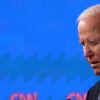One of the common arguments made against wind power is that without government subsidies, mandates or tax credits, wind turbines would not be built. But even when companies do receive preferential treatment to build windmills, just because they’re built doesn’t mean they’re going to work. For that, there needs to be (drum roll, please)…wind! A report from Britain says:
“The analysis of power output found that more than 20 wind farms are operating at less than one-fifth of their full capacity. Experts say many turbines are going up on sites that are simply not breezy enough. They also accuse developers of ‘grossly exaggerating’ the amount of energy they will generate in order to get their hands on subsidies designed to boost the production of green power.
While it is possible some of the results were skewed by breakdowns, the revelation that so many are under-performing will be of great interest to those who argue that wind farms are little more than expensive eyesores. The analysis was carried out by Michael Jefferson, an environmental consultant and a professor of international business and sustainability. He believes that financial incentives designed to help Britain meet is green energy targets are encouraging firms to site their wind farms badly.”
The Daily Signal depends on the support of readers like you. Donate now
In other wind farm news, although the event was called “exceptionally rare and highly unusual”, Europe’s largest wind farm had to be shut down because a 14-ton turbine snapped. It’s not the first time a windmill broke and fortunately no one was hurt. A turbine snapping is no reason to stop building windmills just as coal mining accidents are not reason to completely cut off our coal supply. Accidents happen in any industry and it’s a company’s job to learn from them and improve both quality and safety.
If businesses find it profitable to build supply energy in a variety of ways without government handouts, increased competition will only benefit the consumer. Yet, we’re being told we need to transition to a clean energy economy and that the United States needs to be the leader in building these technologies because, “the nation that leads the clean energy economy will be the nation that leads the global economy. And America must be that nation,” said President Obama in his State of the Union address. If renewable energy eventually competes in the marketplace, economist Don Boudreaux says, “So what if the Chinese are world-leading producers of such equipment? Specializing in the production of other goods and services – things that we produce more efficiently than the Chinese – we Americans can then buy solar panels and wind turbines from the Chinese for use in our homes and offices. The latitudinal and longitudinal coordinates of the factories where the final assembly of such equipment occurs are irrelevant.” That’s not to say U.S. can’t be a leader in wind mill production, but market-based policies are the best way to ensure that America’s renewable energy production is as competitive as possible.
In addition, the cleanliness in the President’s mission to green our economy may be a bit over hyped. We not only use fossil fuels to make turbines but also provide back up power when the windmills don’t spin. Since it’s too costly to stop and start a power plant, wind simply creates more emissions. Or, as Todd Wynn of the Cascade Policy Institute points out, in some instances wind replaces CO2-free sources of energy, like hydroelectricity: “So when the wind blows, the dams stop generating electricity, and when the wind stops, the dams continue to generate electricity. So, in fact, wind power is just offsetting another renewable energy source. It’s not necessarily offsetting any fossil fuel generation.”
Wind may be economically viable in some parts of the United States, but we should let businesses and electricity consumers, not the government, decide that.





























